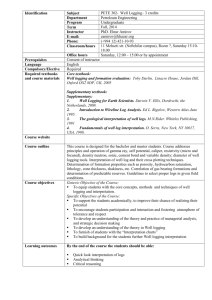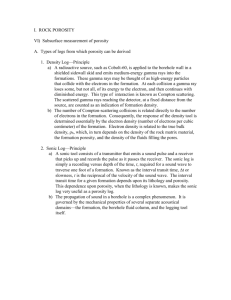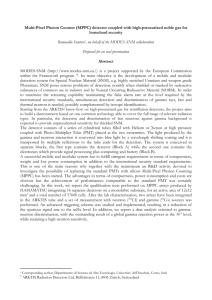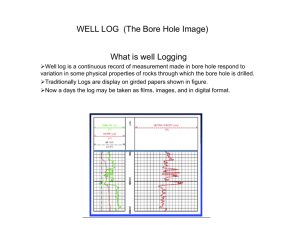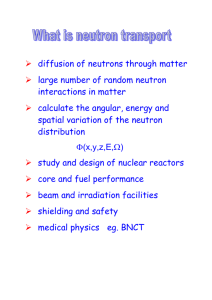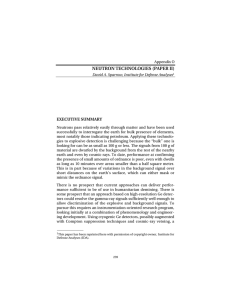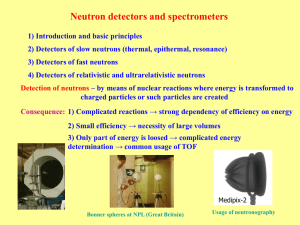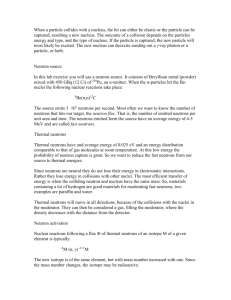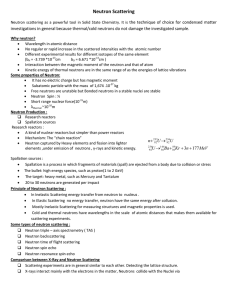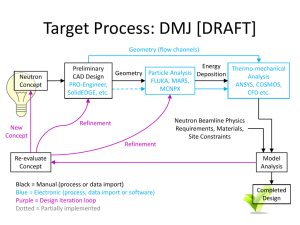Introduction to Nuclear Systems
advertisement
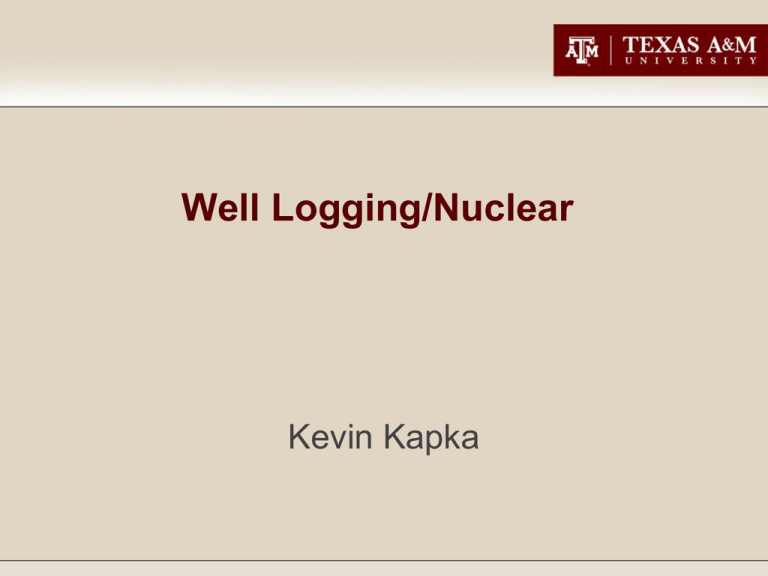
Well Logging/Nuclear Kevin Kapka Basic History • The use of radiation to analyze formations appeared shortly after World War II. The initial application was to determine formation porosity, but it has expanded to well Characterization, Density, and Neutron Activation Analysis. • It was done in secret, due to the engineers being afraid of how the public might respond to “weapons technology on the oil field”. Why? • In short $*1010 • When drilling for oil, you want to know how much oil is in a hole you have already drilled. The science of doing this is called Well logging. Why Cont? • Between the cost of the initial drilling, and then continued production/fracking can be anywhere from 12 to 125 million. • They don’t want to pay this price unless they have too. • Before well logging was a step between drilling and production, but in modern times, we have actually gotten to where we build well logging tools into pipe casing. Fundamental principles-porosity • Conservation of Momentum. Neutrons reflect most heavily off things with an atomic mass of 1. This means that dense hydrocarbons are the most reflective. • Unfortunately, a neutron reflects equally of gas, water, or in some freak cases, fossilized bones. All neutron well logging gets you is neutron density. Fundamental principles-Density • Compton Scattering Neutron Sources • There are two primary sources of neutrons. Chemical, and Accelerator based. • Since our detectors detest most efficiently at the Thermal and Epithermal, we need for them to scatter down. Slowing Down by Scattering • We can calibrate our detectors to only detect the thermal neutrons reflected back. We can then characterize that reaction. Slowing Down by Scattering • This is a rough diagram of the devices I have worked on. The ratio of near detector vs the far detector tells you the slowing down length. This tells you “hydrogen” density. Detectors • These detectors are usually filled with Helium 3, at extremely high pressures. When neutrons interact with Helium 3, via the process stated below, in a charged tube, their interaction is “counted”. Density • To determine if it’s actually a hydrocarbon we then have to get the density, and resistivity of the formation. • The resistivity is measured via induction. Where Z is the atomic number, and M is the molecular weight of the compound. They use 2 detectors, and then correct for the borehole fluid. • This, combined with resistivity, tells us what is in the oil. Results • These (density, resistivity, and porosity) are plotted in real time as a function of depth, and overlaid on top of each other. • The dotted line is “porosity” or hydrogen density, and the solid line is gamma density. • There are other ways to measure density, and porosity using radiation. My job • I am the Senior Physicist for the new Neutron Spallation Tools. • This uses neutron spalling as it’s neutron generator. • It was not previously available technology due to power consumption issues. • Also consulted on the development of new quality assurance mechanisms, automated well logging analysis, firmware improvements, and training input. My first project • In new tools, and new methods we have to evaluate how “deep” into the reservoir our tools go. • We will pump paraffin wax into and out of these sheaths (while the others are filled with sandstone/limestone). Until we no longer see a response. Neutron Spectroscopy • If you want to see the equations, I will gladly derive them. • Using a high intensity neutron source, and a thermalizing compound (usually graphite combined with the effect of the drilling mud), we “activate” the formation. Activation is when you get a stable isotope to absorb a neutron. • It then becomes unstable and begins emitting radiation, usually in gammas. This give us information on oil baring shales. Graphs This explains what is going on. We measure the radiation that comes off of the formation, and use it to
